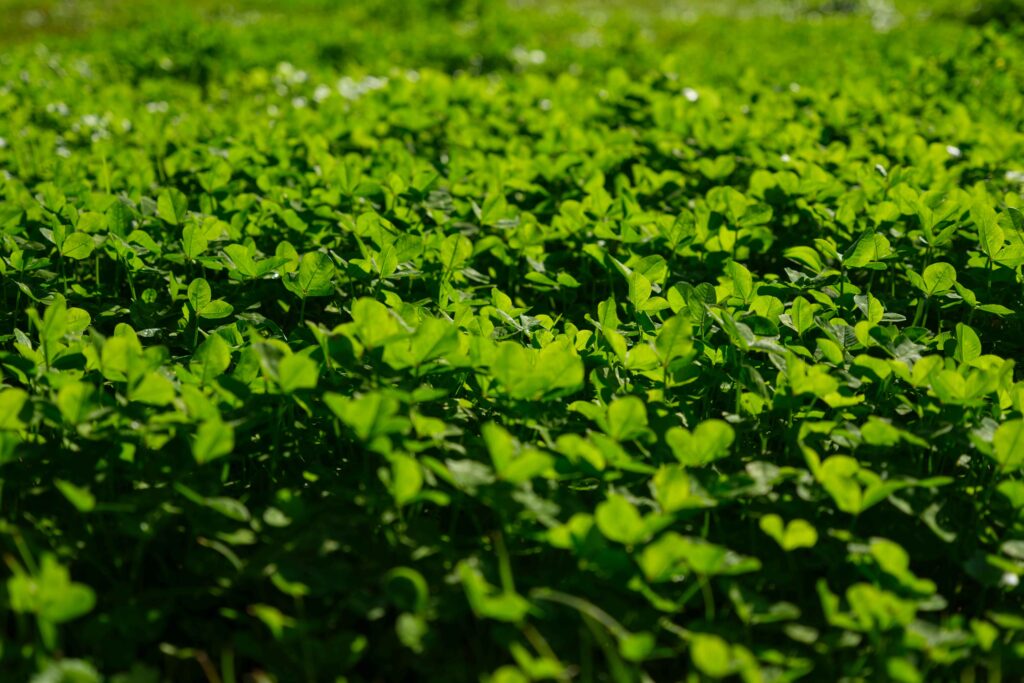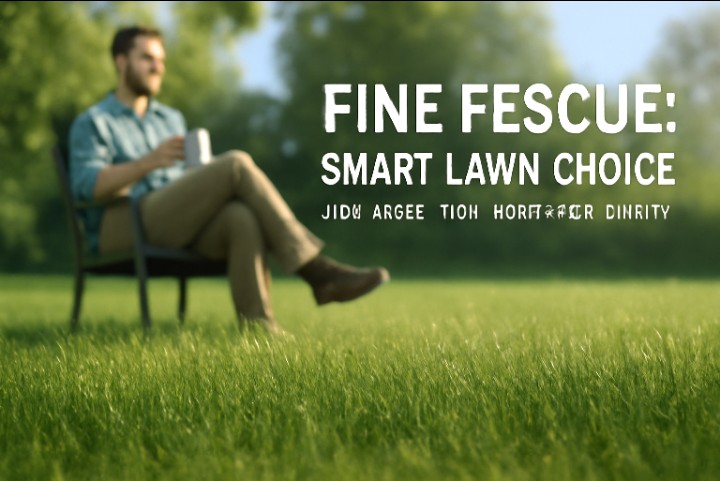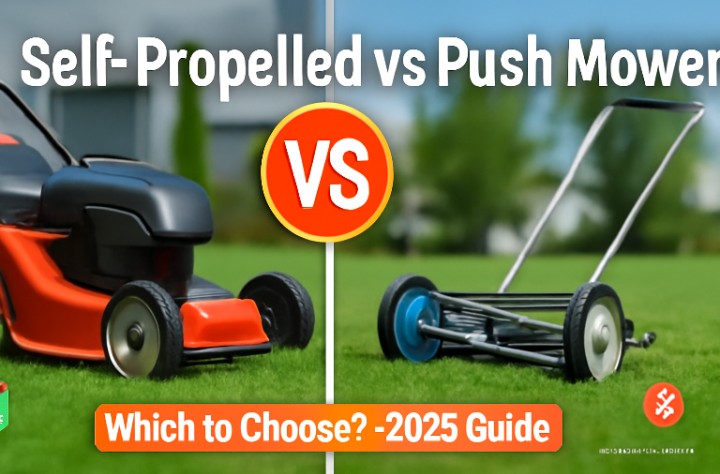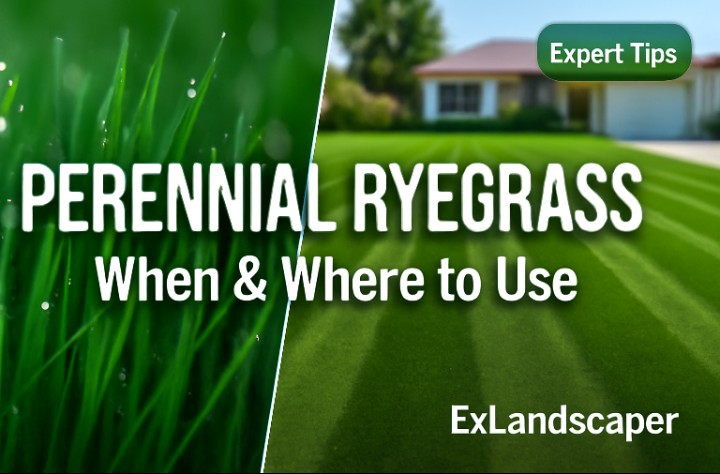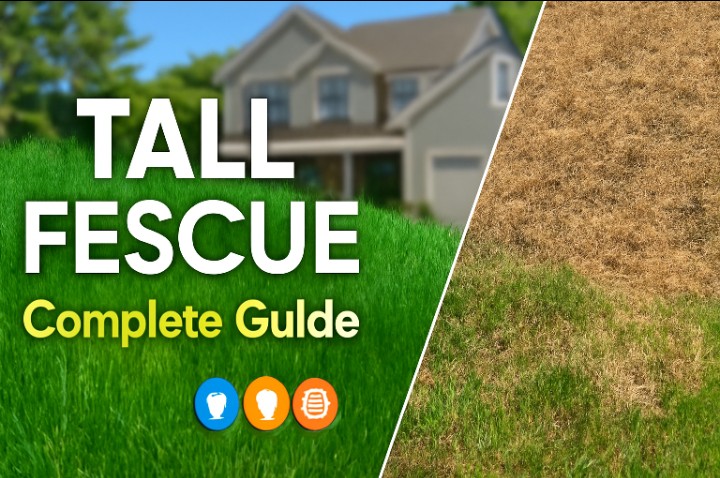Something exciting is happening in American and European backyards right now. Homeowners are walking away from their weekly mowing routines. They are saying goodbye to expensive fertilizers and endless watering schedules. Instead, they’re choosing something their grandparents might recognize clover lawns.
This is not just a passing fad from social media. It is a real shift toward smarter landscaping that saves money and helps the planet. Clover lawns offer low maintenance, natural fertilization, drought resistance, and environmental friendliness while supporting pollinators. They create lush green spaces with minimal effort.
Why are so many people making this switch in 2025? The reasons go deeper than just convenience. From Californias water restrictions to New Yorks rising lawn care costs, homeowners need practical solutions. Clover delivers exactly that a beautiful yard that practically takes care of itself.
What Is a Clover Lawn?
Think of clover as grass’s overachieving cousin. Instead of single-blade grass plants, you get small leaflets grouped in threes. Most people choose White Dutch clover for their lawns because it stays low and spreads naturally. The tiny white flowers bloom throughout spring and summer.
Clover has nitrogen-fixing abilities, working as a living mulch that provides natural fertilizer. This means it actually feeds other plants around it. You can plant pure clover for a completely different look. Or mix microclover with existing grass for a more traditional appearance.
Microclover is the trending option right now. It grows smaller than regular clover and blends seamlessly with grass. Your neighbors might not even notice you have made the switch. But your water bill definitely will.
The visual difference is striking once you know what to look for. Clover stays green during droughts when grass turns brown. It creates a softer, more natural carpet than traditional turf. Plus, those little flowers attract butterflies and bees turning your yard into a mini ecosystem.
The Rising Trend in 2025
Social media has definitely played a role in clovers comeback. TikTok users share before-and-after transformations that get millions of views. YouTube channels dedicated to sustainable living feature clover lawn tutorials regularly. But the real driving force is practical results that homeowners are seeing.
Whether you choose regular clover or micro clover lawns, this sustainable landscaping option is likely to stick around due to environmental benefits and increasing demand. Lawn care companies now offer clover installation packages alongside traditional services.
Google searches for “clover lawn” have skyrocketed compared to previous years. Home improvement blogs feature clover as their top recommendation for drought-prone areas. Even mainstream gardening magazines are running cover stories about alternative lawns.
Professional landscapers report increased requests for clover installations. Emily Henderson, a popular home design blogger, recently documented her own clover lawn project. Her decision to do a clover lawn has been “oddly polarizing” but sparked important conversations about lawn alternatives.
The trend is not just about individual homeowners either. Some municipal parks and commercial properties are experimenting with clover. Schools are using it for playground areas because it is softer for kids who fall.
Cost Comparison: Clover vs Traditional Grass
Here is where clover really shines your wallet will thank you. It costs just 1$ to seed 1000 square feet of land with clover. Compare that to traditional grass installation costs. Sod installation usually runs between 1100$ and 3,000$ for an average yard.
White clover seed costs about 10$ to $13 per pound, covering roughly 2000 square feet. That means a 4000 square foot lawn costs around 20$ in seeds. Even premium grass seed costs significantly more for the same coverage.
But installation is just the beginning. Weekly lawn mowing services cost between 1820$ and 5200$ annually. Clover lawns need minimal mowing maybe once or twice per season. Some homeowners never mow their clover at all.
Water costs add up quickly with traditional grass. Traditional lawns need about an inch of water weekly, using over 30,000 gallons annually for 1,000 square feet. Clover survives on much less water, especially after it is established.
Growing a clover lawn is much cheaper than grass, both in planting and ongoing maintenance costs. Over five years, the savings become dramatic. You will spend hundreds instead of thousands on your lawn.
Environmental Benefits of Clover Lawns
Clover works like a natural factory for soil nutrition. Clover improves soil quality while crowding out weeds, helping other plants grow. Its roots form partnerships with bacteria that pull nitrogen from the air. This nitrogen becomes food for surrounding plants.
Clover is naturally drought-tolerant, fixes nitrogen in soil and resists many common lawn problems. This makes it perfect for areas with water restrictions. During California’s drought years, clover lawns stayed green while grass lawns turned brown.
The pollinator benefits can not be overstated. Clover attracts beneficial pollinators such as bees and butterflies. Your yard becomes a feeding station for these essential creatures. Native bee populations especially benefit from clover flowers.
The dense root system prevents soil erosion while requiring little water to grow. This matters in areas prone to heavy rains or slopes. Traditional grass roots are shallow compared to clover’s deeper network.
Urban areas see temperature benefits too. Clover lawns stay cooler than concrete or even grass during hot summer days. This helps reduce the heat island effect in cities. Your air conditioning bills might even decrease slightly.
The chemical reduction is significant. No synthetic fertilizers means cleaner groundwater. Fewer pesticides means safer spaces for pets and children. Birds that hunt insects in your yard encounter fewer toxic chemicals.
Maintenance: Clover Lawns vs Traditional Lawns
Forget your weekly mowing schedule. Most clover lawns need cutting just two or three times per growing season. Some homeowners embrace the natural look and never mow at all. When you do mow, set your blade higher than you would for grass.
Clover lawns are fast-growing and prevent other weeds from coming through naturally. The dense growth pattern crowds out dandelions and crabgrass. You will not need herbicides or pre-emergent treatments.
Disease problems are rare with clover. Grass suffers from brown patch, dollar spot, and fungal issues. Clover’s natural resistance means fewer chemical treatments. This saves money and reduces your environmental impact.
Seasonal care is minimal but important. Spring brings natural overseeding as clover spreads itself. Summer requires occasional watering during extreme heat. Fall cleanup is optional since clover leaves decompose quickly.
Winter dormancy varies by climate. In northern regions, clover goes brown but returns green earlier than grass. Southern climates often see year-round color. Either way spring recovery is faster than traditional lawns.
The spreading habit means bare spots fix themselves. Clover sends out runners that fill empty areas naturally. Traditional grass requires overseeding and careful nurturing to repair damage.
Homeowner Experiences & Case Studies
Real homeowners are sharing their clover success stories across social platforms. One Reddit user posted progress photos showing complete lawn transformation within six months. By next spring, their entire lawn was easily replaced with healthy clover.
Pet owners report positive experiences with clover lawns. Dogs seem to prefer the softer texture for lying down. Cat owners note that clover does not track mud indoors like grass does after rain. The natural fertilizer does not burn paws like synthetic chemicals can.
Families with allergy concerns find mixed results. Some people react to clover pollen during flowering season. Others discover their grass allergies disappear completely. The key is testing a small area first before converting your entire yard.
Homeowners share stunning before-and-after photos showing magical transformations. The visual impact often surprises neighbors and visitors. Many people do not realize it is clover until they look closely.
Parents appreciate the safety factor. Children can play on clover without exposure to lawn chemicals. The flowers provide learning opportunities about bees and butterflies. Some families use clover areas for picnics because the surface stays cooler.
Challenges or Downsides of Clover Lawns
Heavy foot traffic presents the biggest challenge for clover lawns. Clover is not as wear-tolerant as some grasses. Busy pathways or play areas might develop bare spots. Sports activities can damage clover more easily than sturdy grass varieties.
The flowering period creates minor inconveniences for some homeowners. White flower pollen can stain clothes and shoes during peak bloom. Bees visiting flowers might concern people with allergies. Regular mowing eliminates flowers but defeats some environmental benefits.
Homeowners associations sometimes resist clover lawns. Traditional neighborhood covenants may require “maintained grass lawns.” Check your HOA rules before making the switch. Some communities are updating their guidelines to allow sustainable alternatives.
Clover may not be as drought-tolerant as some grass varieties in extreme conditions. During severe drought, even clover can go dormant. However, it recovers faster than most grass types once water returns.
Temperature extremes affect clover differently than grass. Very hot climates might see brown patches during peak summer. Very cold regions experience winter dormancy that some homeowners dislike. The timing does not always match traditional grass cycles.
Establishment takes patience initially. Clover seeds are smaller than grass seeds and need consistent moisture to germinate. The first few weeks require more attention than mature clover will ever need.
Should You Make the Switch in 2025?
Consider clover if you live in drought-prone areas like California, Arizona or Texas. Water restrictions make traditional lawns expensive and sometimes impossible to maintain. Clover provides resilience, especially in areas with water restrictions or high summer temperatures.
Low-maintenance preferences make clover ideal for busy homeowners. Retirees often love the reduced workload. Young families appreciate the safety benefits and cost savings. Anyone tired of weekend mowing schedules should consider the switch.
Environmental consciousness drives many homeowner decisions today. Supporting pollinators feels good while saving money. Reducing chemical usage protects groundwater and local ecosystems. Clover lawns check all these boxes naturally.
Avoid clover if children use your yard for sports regularly. Football, soccer, and other high-impact activities work better on sturdy grass. Consider mixing clover into less-used areas while keeping grass for active zones.
HOA restrictions might limit your options. Research your community guidelines before investing in clover seeds. Some neighborhoods allow mixed lawns or clover in back yards only. Others prohibit alternatives entirely.
Start small with a test patch this spring. Choose a visible area where you can monitor progress. Success with 100 square feet builds confidence for larger conversions. Many homeowners expand their clover areas gradually over several seasons.
Conclusion
Clover lawns represent more than just a gardening trend they are a practical response to modern challenges. Rising water costs, environmental concerns and busy lifestyles make traditional grass maintenance increasingly difficult. Clover offers eco-friendly, low-maintenance and visually appealing qualities that solve real problems.
The financial benefits alone justify considering the switch. Clover seeds are cheap and require little water to grow helping reduce water usage and save money. Maintenance costs drop dramatically after the first year. Your time becomes free for activities you actually enjoy.
Environmental advantages multiply these personal benefits. Supporting local pollinators helps entire ecosystems thrive. Reduced chemical usage protects water supplies and soil health. Even small individual changes contribute to larger environmental improvements.
Try clover in a corner of your yard this growing season. Watch how it handles your local climate and soil conditions. Experience the reduced maintenance firsthand. Most homeowners who test clover end up expanding their coverage within two years.
The lawn of the future might look a lot like lawns from the past. Sometimes the best innovations are actually rediscoveries of what worked before. Clover lawns prove that sustainable choices can also be the most practical ones.

